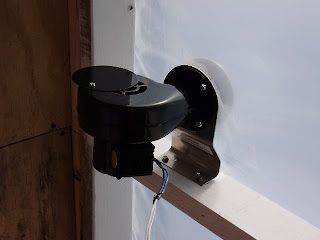Every farmer and gardener has different methods of dealing with the deer problem but most farmers we know use electric fencing baited with peanut butter. The idea is that the deer will go for the peanut butter, get zapped, and become "trained" not to go near the fence.


We just put the electric charger and fence in this year. In previous years our free-roaming dog Mama would chase the deer enough to keep the crop losses to a minimum. Now at 10 she's still a healthy dog and does her job of herding the cars out of the driveway (video of that someday), but we think she's getting a bit too used to the deer. She does manage to bag an average of 3 possums a year. She got one earlier this year up in the field.

..."Mama! Look! Deer! Look! Down there! Go get 'em!"
We do have this little 1 year old terror though:

Maggie. Cute right? Well, she's insane. And she can't tell deer from chickens. She has plenty of room but for the health of the livestock and area wildlife in general, including bipedal package carriers, we keep her on a 100 ft. run with a long line when we can't keep an eye on her. She still manages to find a carcass here and there (see at 9 oclock). At night when she hears anything she'll let out a mean bark & growl like she's a 100 lb. wolf. That helps keep away deer and other predators, we like to think.
So that's our combination electric fence and canine method of deer prevention. Other farmers we know use the combination electric fence and lead method, which we have yet to employ.
Still though, the deer manage to sneak past our front. We had some strawberries taken - though not many.




















